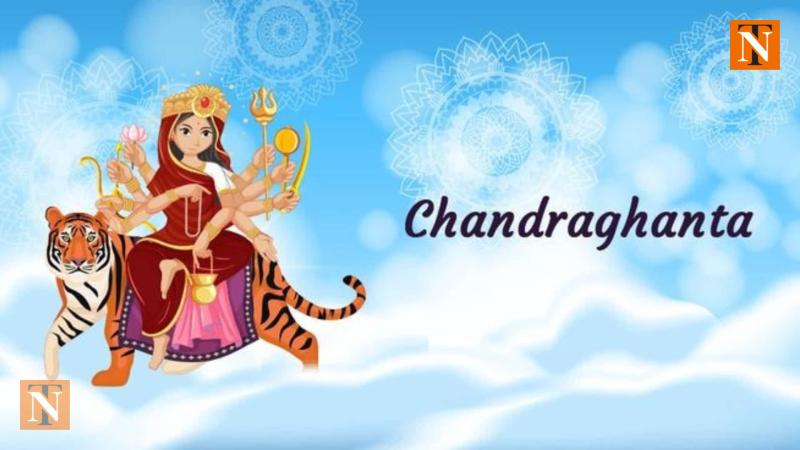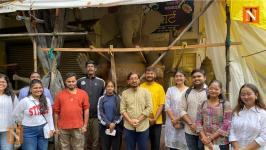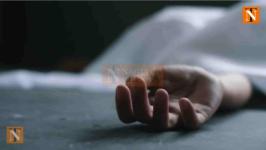Navratri Day 3: Worship Devi Chandraghanta, the Protector of Devotees

On the third day of the sacred Navratri festival, we pray to the powerful and radiant Goddess Chandraghanta. Adorned with a crescent-shaped moon on her forehead, resembling the bell of a temple (ghanta), she takes this fierce form to protect the world and bring balance to the universe. But what is the story behind Chandraghanta? How did Devi Durga, the embodiment of Aadi Shakti, take on this formidable avatar?
The Birth of Parvati and the Penance for Love
In a previous incarnation, Devi Durga was born as Sati, the wife of Lord Shiva, who tragically self-immolated herself. After her death, Lord Shiva became detached from the world, withdrawing from all attachments. However, the story of love and divine reunion continued when Devi Durga was reborn as Parvati, the daughter of Himavan, the god of mountains, and his wife Mena.
Parvati’s parents had longed for a child and, after years of penance, were blessed with a daughter who was none other than Aadi Shakti herself, incarnated to restore balance. Guided by the wise sage Narada Muni, Parvati undertook severe penance to win the heart of Lord Shiva once again. Her devotion was unwavering, and after years of asceticism, Lord Shiva finally agreed to marry her.
A Terrifying Wedding Procession
But Lord Shiva, after losing Sati, had become a figure of detachment and terror. When the day of the wedding arrived, he came to Himavan and Mena’s house looking anything but the groom Parvati’s family had envisioned. His hair was matted, his body covered in ash, and snakes coiled around him. His appearance was so terrifying that many of the assembled guests fainted in fear. His wedding procession was just as eerie, filled with ghosts, ghouls, and ascetics—creating a scene straight out of a nightmare.
Parvati, shocked by Shiva’s appearance, but she was not one to give up. After all, she had endured severe penance to win his heart, and she was determined to see her love come to fruition.
The Birth of Chandraghanta
In that moment of determination, Parvati transformed into a powerful and fearsome form—Devi Chandraghanta. Riding a lion, she grew ten arms, each holding a divine weapon: a trident, mace, arrow, bow, sword, lotus, goad, bell, and a kamandal, while her tenth hand remained raised in a gesture of blessing. With her eyes closed, she prayed fervently to Lord Shiva, requesting him to change his form and present himself as a more fitting groom, along with a dignified wedding procession.
Moved by her prayers, Lord Shiva transformed into a Chandrashekhar, Avatar. His terrifying wedding procession also changed, now filled with gods, goddesses, and celestial beings. The wedding proceeded with great joy, celebration, and divine grace, as Parvati and Shiva were finally united in matrimony.
The Power of Maa Chandraghanta
Since that day, the third day of Navratri is dedicated to Maa Chandraghanta, the fierce yet compassionate goddess who symbolizes both strength and protection. Devotees who pray to her with pure hearts believe she has the power to dispel all forms of negativity from their lives—whether it’s mental anxiety, depression, or other dark forces. She eradicates evil, wipes away sins, and blesses her followers with peace and prosperity.
When she rides her lion, she radiates fierce energy, ready to protect her devotees from harm, while also embodying the nurturing love of a mother. The sight of Chandraghanta is a powerful reminder of the divine balance between strength and compassion.
As devotees celebrate the third day of Navratri, they honour the divine power of Chandraghanta, praying for her blessings to remove all negativity and fill their lives with strength, courage, and peace.








-t-thumb.jpeg)
-t-thumb.jpeg)
